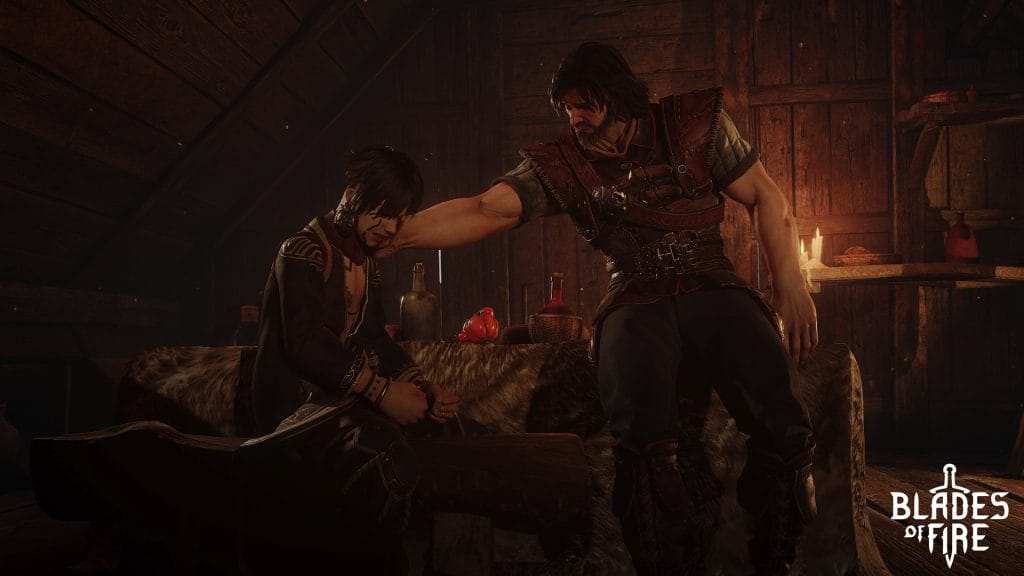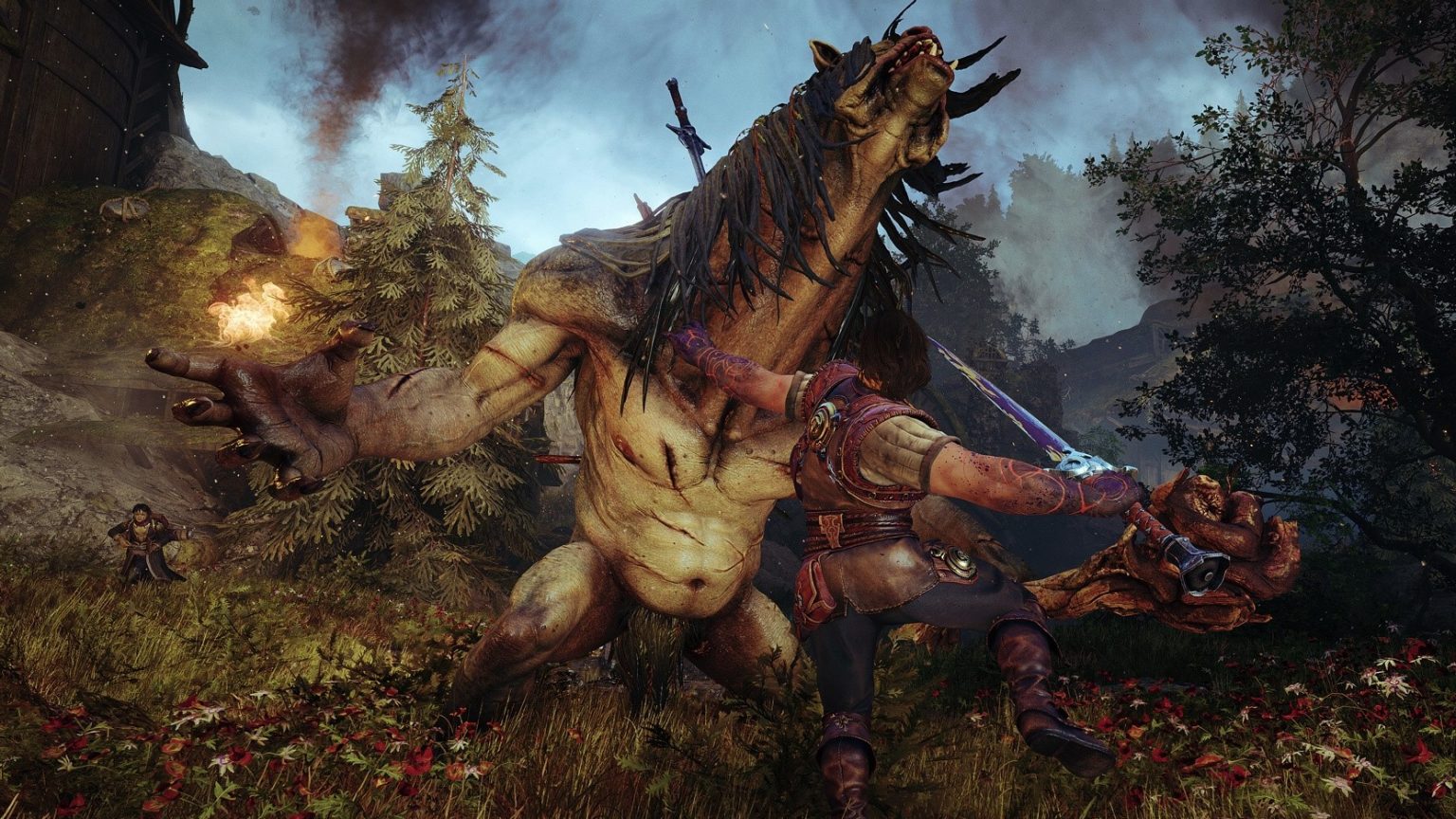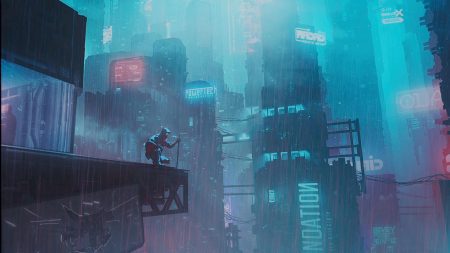“Did he skip leg day?” my partner asks from the couch.
“He can’t jump, but I doubt he can swing that greatsword with only his arms.” I was only partially right.
I don’t think of God of War’s Kratos as a particularly agile or flexible guy, especially in the later games. Aran de Lira, the protagonist of MercurySteam’s new action RPG Blades of Fire, makes Kratos look downright limber.
After the studio’s masterful Metroid Dread (2021) and Castlevania: Lords of Shadow duology (2010 & 2014), I expected a much more agile protagonist in MercurySteam’s new game. Instead, I got a character that can’t jump, let alone roll into a ball.
After investing more than 50 hours into Blades of Fire, I’ve come away from the experience lukewarm. The presentation is jarring — it feels like a graphically updated PlayStation 2-era game in the worst ways. The gameplay offers interesting elements, particularly its (admittedly overcomplicated) weapon forging and degradation mechanics. As a whole, however, Blades of Fire fails to leave an impact befitting the studio’s pedigree.

Forge On, Boy
The story of Blades of Fire wants to be more significant than it is. Players take the reins of Aran de Lira, a generic bearded action-RPG protagonist who makes Final Fantasy XVI’s Clive Rosfield seem complex. Aran’s main motivation is… wait for it… revenge after both his body and his soul were scarred due to a tragedy in his youth.
Aran is joined by a cast that feels like cereal box characters that we’ve already seen in better games. There’s the bright scholar Adso de Zelk, who follows Aran around and records creatures and events. There’s also the ancient witch Master Forger Glinda (yes, like Glinda the Good), who serves as Aran’s reluctant mentor when he is chosen to wield one of the seven Forgers’ Hammers.
The sub-stories that make up the main narrative prove more interesting, but these, again, are stories that you have likely played more memorable versions of. Ultimately, the narrative and the writing won’t be why you’ll pick up Blades of Fire.

A Man, His Hammer, and the Forge
Blades of Fire’s forge and degradation systems are its most redeeming factors. The game is an action RPG, but Aran doesn’t level up; therefore, experience isn’t lost when he dies. Rather, he buries the tip of his current weapon in the ground, petrifying it. If the player wants it back, they can go grab it. And if the player doesn’t care…
Well, that isn’t really a problem: Weapons are not found but rather forged in Blades of Fire. With a certain amount of materials acquired from killing enemies, breaking barrels, and destroying other inanimate objects, Aran can craft a range of weapons. These weapons are unlocked via a mythical forge surrounded by molten lava that Aran gets transported to.
At this forge, players customize elements of their weapons (metals, wood types, sizes, and shapes), adding certain attributes and benefits to improve their capabilities in combat. Players also complete a mini-game that determines how many times the weapon can be repaired.
This mini-game is unique to Blades of Fire. Aran hammers metals — in the form of a variable and changing bar graph — to get as close as possible to an outline of the weapon’s shape. The forging mini-game is easy to understand but difficult to master.
Further, the mini-game alleviates any concerns you may have about weapon degradation in Blades of Fire. MercurySteam has taken the worst part of Nintendo’s The Legend of Zelda: Breath of the Wild and reforged it. Weapon degradation feels less concerning when the player can just rebuild the exact same weapon, assuming they have the easily acquired materials.

Castle-Aran: Lord of Shadow
Combat-wise, Blades of Fire borrows from the Soulsborne games, while adding the heaviness of God of War (2018). Death isn’t uncommon here, but due to the forge mechanic, the stakes are never quite as a high when compared to FromSoftware’s greatest hits.
Aran’s movement and attacks feel a lot like Kratos’ swinging of his axe. Aran cannot throw his weapons like the Greek god turned Norse hero, but Aran can swing his weapons in all four directions. Each of the four action buttons (Cross, Circle, Square, Triangle on PlayStation) attacks in the corresponding direction (e.g., Cross hits bottom up and Square hits left to right). Changing color outlines (Red, Yellow, and Green) around the enemies visually informs how an enemy can be attacked with the equipped weapon.
Aran is less nimble than fellow (Samus) Aran and Castlevania: Lords of Shadow protagonist Gabriel Belmont. The combat system in Blades of Fire feels like a spiritual offshoot of the latter with its third-person fantasy action. Unfortunately, the move set here just isn’t as visually appealing as watching Belmont navigate fights.
Most of the time, I found myself simply holding down the action buttons to power up Aran’s attacks. The game’s tutorials introduce this mechanic alongside a decapitation function — a way to make transitioning between bars of enemy health more interesting. If an enemy is not decapitated quickly enough, they regenerate their previous bar of health. The game sadly underutilizes this tool, but it does make for an exciting kill animation.
Getting the timing just right with the proper weapon against a green outline feels great! Transitioning between your weapons to find that green outline, on the other hand, quickly proves tiresome. Compound these repetitive actions over the course of 50+ hours, and Blades of Fire never quite does enough with its combat to sustain its lengthy runtime.

Final Thoughts
Reflecting on my time with Blades of Fire, I’m left feeling conflicted. Its forging and weapon degradation systems are engaging, improving upon the most annoying feature in recent Zelda games. (It is so hard to improve upon Nintendo’s greatness, yet MercurySteam does just that!) The combat also makes a decent first impression, and only improves as you obtain new weapons.
In theory, Blades of Fire had everything going for it. In reality, though, it simply left me wanting to play other, better games instead. Its characters, world, and story are generic at best and uninteresting clones at worst. The more I played, the more disappointed I became.
MercurySteam has contributed to some of my favorite franchises since 2010. I love their take on Castlevania. The studio has also developed some interesting standalone games since its inception, including the criminally underrated Clive Barker’s Jericho (2007).
I went into Blades of Fire hoping for a studio’s triumphant return to form. Unfortunately, much like Aran, this one could have spent some more time in the gym.
Score: 5.5/10
Blades of Fire, developed by MercurySteam and published by 505 Games, is available now on PC (via Epic Games Store), PlayStation 5, and Xbox Series X/S. MSRP: $59.99. Version reviewed: PS5.
Disclaimer: A review code was provided by the publisher.
Clint is a writer and educator based out of Columbus, OH. You can often find him writing about Middle English poetry, medieval games, or video games. He just finished a PhD in English at the Ohio State University. You can find his academic and public work at clintmorrisonjr.com.









